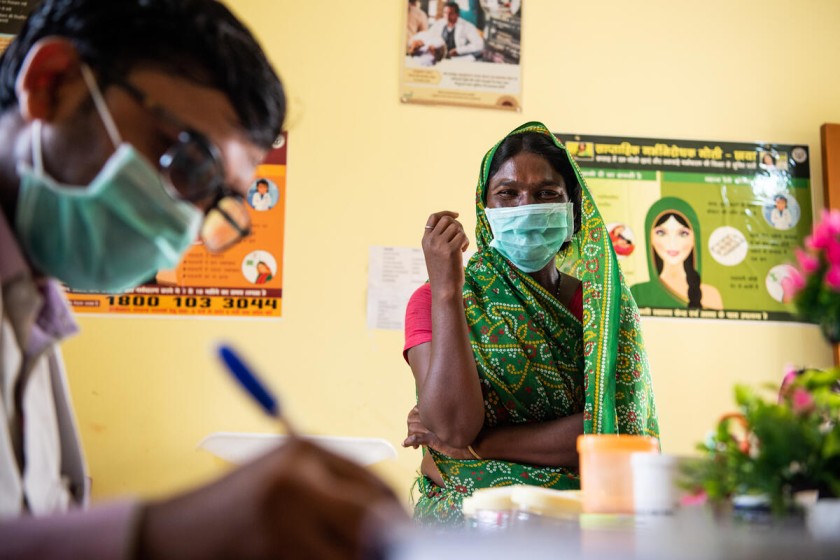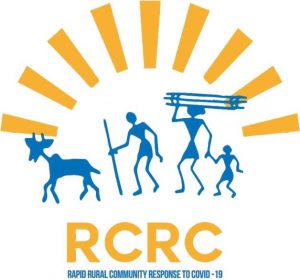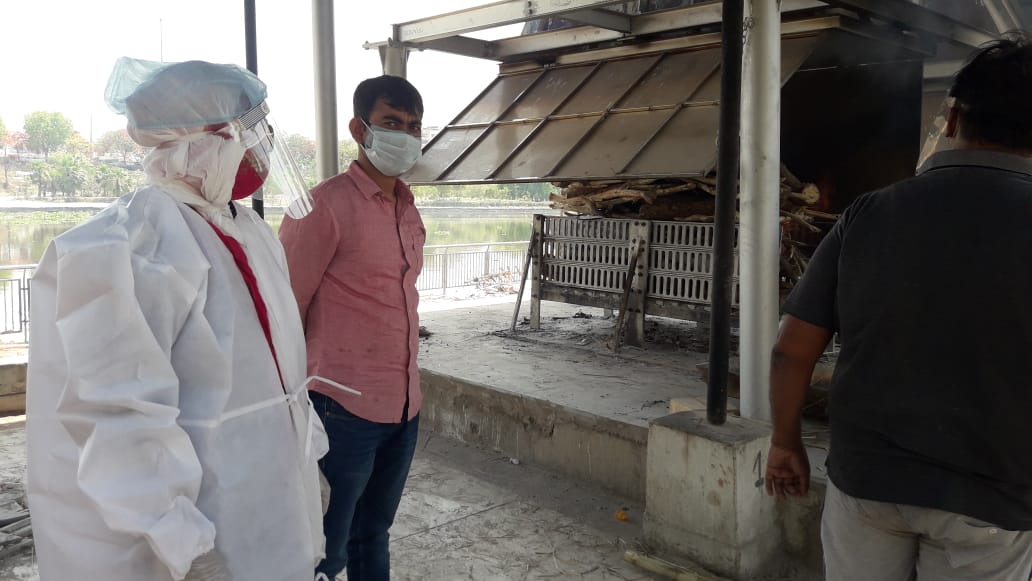Read the Hindi version of this article here.
As healthcare systems in urban cities across India grapple with the second wave of COVID-19, smaller towns and villages in the country too, are facing devastating consequences. A lack of infrastructure, limited awareness about the extent of the spread of the pandemic, and vaccine hesitancy are some reasons why rural India may not be properly equipped to deal with the pandemic, a second time around.
In March 2020, more than 60 civil society organisations (CSOs) came together to form a coalition—the Rapid Rural Community Response to COVID-19 (RCRC)—to enable a quicker response to the pandemic in rural areas. Given our reach of 1.6 crore people in more than 110 districts of 15 states, RCRC provided relief and livelihood support to millions of people affected by the pandemic last year.
Drawing on the network of our member organisations, we have developed a sense of the situation on the ground and an understanding of what needs to be done immediately and in the medium-term to provide support to rural communities, particularly those in remote villages, and also in small and medium towns.
Here is an overview of our findings from the past year and our suggestions moving forward.
Condition and challenges in rural India
Testing infrastructure in the areas in which our member organisations work falls far short of the requirement. There are huge delays in blood samples being sent for testing and test reports are often greatly delayed. People are reluctant to follow quarantine protocols, while there is also a lack of availability of quarantine facilities. The following observations mark the condition of the rural people we work with:
- Fear among the public regarding contracting COVID-19.
- Lack of testing facilities and delay in reports, resulting in the possibility of further infections.
- Lack of essential medicines.
- Vaccine hesitancy and inadequate vaccination infrastructure.
- Lack of facilities at hospitals.
- Reverse migration with limited monitoring and testing systems in place, unlike last year.
- Fear of lockdown and losing income and livelihood sources.

Recommendations
Mitigation to a large extent is the strategy that we should adopt since the disease is rapidly spreading to the interiors. We suggest the following measures:
1. Launch a massive communication drive guiding the public regarding:
- Care in mild cases of COVID-19 by ensuring the availability of finger oximeters, N-95 masks for care providers, soaps, and sanitisers; and establishing protocols for home isolation and care, and quarantining in schools and at home. This could be reinforced by tapping into all frontline personnel, including private sector sales and distribution staff, postmen, and teachers. All should be informed and should disseminate correct information, using advisories issued by the government (Ministry of Health and Family Welfare), medical institutions such as the All India Institute of Medical Sciences (AIIMS), and international bodies such as the World Health Organisation (WHO).
- Techniques such as pronation that enhance one’s own ability to reduce the severity of the disease.
- The possible side-effects of the vaccine to dispel any fears surrounding vaccination.
- Availability of facilities or doctors through a helpline and a dashboard. This could be updated every four hours to indicate the status of vaccines, oxygen cylinders, beds, ambulances, and so on, especially in Tier-III and Tier-IV towns and villages. This is to be facilitated by setting up public displays of information at Digital Seva Kendras (or equivalent), Gram Panchayat Offices (or equivalent), and schools that have computers.
2. Provide village-level COVID-19 support which includes:
- A short manual or a video to dispel the fear of home isolation (can be done for 85 percent of the cases).
- Creating village -or panchayat-level quarantine centres for migrant workers and labourers and for people who may not have a home isolation facility. Ensuring sufficient medical attention, nutritious food, and facilities for drinking water, sanitation, and hygiene in these centres.
- Medicines for patients isolating at home, oximeters (with batteries including replacement), thermometers, and other medical equipment in every village with ASHA workers or at the gram panchayat level. Additionally, orienting them with proper knowledge and practice to support COVID-19 cases.
- Sufficient quantities of N-95 masks, sanitisers, and vaccines for frontline workers and the staff of nonprofits operating in the area.
- Subsidising rates of masks and sanitisers.
- Making contraceptives easily accessible.
- Ensuring comprehensive health insurance that covers the medical expenses incurred by frontline village workers such as community resource persons (CRPs) and nonprofit staff, so as to enable them to serve the community with a sense of security and safety. Where such an insurance scheme is not available in the market, create a fund to reimburse actual medical costs incurred by frontline workers and nonprofit staff on COVID-19 duty, up to a reasonable limit.
- Registering frontline workers, CRPs, and staff of nonprofits as ‘COVID-19 volunteers’ since they function as a strong link between the community, government, and civil society.
- Setting up a mental health (and trauma) counselling helpline particularly for women and children in each district and mandating existing counselling helplines such as, ‘181’ and ‘Kiran’, to provide the same.
- Giving online training to counsellors (ECHO being one example).
- Ensuring access to vaccines at the primary healthcare level.
3. Organise relief at the village-level, ensuring the following:
- Free ration (PDS) along with an add-on kit containing pulses, dal, oil, sugar, and soap for six months.
- Food support and immunity boosters for children below 11 years of age.
- Continuous supply of food provisions at anganwadis and schools.
- Alternative arrangements for access to clean water closer to homes, especially for women and girls as they have to walk long distances for water.
- Provision of drinking water supply through tankers and hand pump repairs as the temperature rises.
- Intensifying the National Rural Employment Guarantee Act (NREGA) to ensure access to work and funds at the village-level. Rainwater harvesting and water recharge structures could be prioritised.
4. Provide district or sub-district level support, including the following:
- Twenty-four hours transport for those that require it to reach hospitals, especially in moderate and severe cases.
- Enhanced availability of vaccines with the focus on universalising the first dose immediately; refrigerators for vaccines, oxygen cylinders, oxygen concentrators, X-ray machines, nasal calendulas, and other medical equipment.
- Encourage donors to reimburse the human resource costs borne by district teams of CSOs.
5. Protect and support livelihoods through:
- Production and marketing support on digital platforms for agriculture and livestock produce and for non-farm activities. Some of this support could be in the form of loans.
- Decentralised efforts for the collection of non-timber forest products.
- Desilting of water bodies under NREGA.
6. Ensure that people can avail benefits of public welfare schemes by:
- Ensuring quick approvals of NREGA demand and mandating districts to facilitate work initiation; publicising scope of individual works along with collective works. Widening the scope of NREGA to include the building of roof water tanks and toilets by families or groups of families. Increasing wages as well as the number of work days.
- Collaborating and consulting with the government departments to convey the ground reality and put in requests and demands according to the various schemes such as NREGA, Public Distribution System (PDS), Direct Benefit Transfer (DBT), Pradhan Mantri Jan Dhan Yojana (PMJDY), and others.
7. Recognise civil society efforts
- Publicly recognise the work of community leaders, Panchayati Raj Institutions, and CSOs to incentivise them.
8. Reduce unnecessary load on hospitals
- Building a network of certified private health providers to provide counselling on the phone to patients and field workers for proper guidance, can help with this.
9. Conduct regular surveys of rural households and migrants
Last year, we, at RCRC, conducted three rounds of surveys (which can be found here, here, and here) with the support of 40 of our member organisations and managed to capture data on close to 8,500 rural households. This database could be utilised to better implement schemes and practices.
—
Know more
- Follow this page for insights and analysis on the COVID-19 crisis in India.
Do more
- Support organisations that are responding to the second wave of COVID-19.
- Connect with RCRC at info@rcrc.in to learn more about and support their work.




